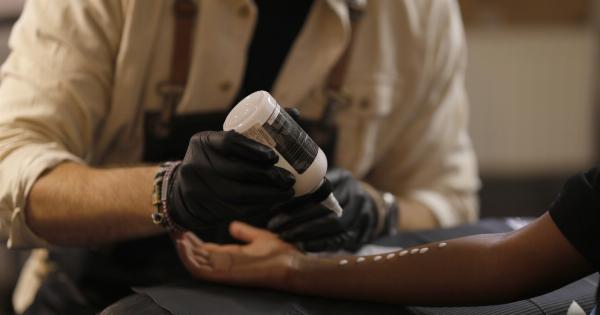Getting a tattoo can be a fun and exciting experience, but sometimes life circumstances change or you may simply not like your tattoo anymore. Tattoo removal has become a popular option for those looking to get rid of unwanted ink.
This guide will provide you with everything you need to know about tattoo removal.
How Does Tattoo Removal Work?
Tattoo removal works by breaking down the ink particles in your skin through the use of lasers. The laser targets the ink particles and causes them to break down into smaller pieces that your immune system can then process and remove from your body.
Types of Lasers Used for Tattoo Removal
Tattoo removal lasers come in various types and wavelengths. Different colors of ink require different wavelengths to effectively break them down. The most common types of lasers used for tattoo removal include:.
- Nd:YAG laser – typically used for dark ink and is effective for all skin tones
- Alexandrite laser – most effective on black, blue and green inks
- PicoSure laser – newer technology that can remove complex colors like red, orange and yellow
What to Expect During a Tattoo Removal Session
Before the tattoo removal session, your skin will be cleaned and a cooling gel or numbing cream may be applied to the area. The laser will be passed over the tattoo, emitting bursts of light.
Each burst will feel like a rubber band snapping against your skin. The amount of time the session takes will depend on the size and complexity of the tattoo.
Number of Sessions Needed for Tattoo Removal
The number of sessions needed to fully remove a tattoo will depend on the size, color, and age of the tattoo, as well as the type of laser used during removal. Generally, most tattoos can be removed within 5-15 sessions.
Sessions are usually spaced 4-6 weeks apart to allow for proper healing.
Side Effects of Tattoo Removal
Tattoo removal can have some side effects, including:.
- Pain and discomfort during the session
- Skin irritation, redness, and swelling
- Blisters and scabs
- Possible scarring or changes in skin texture
Cost of Tattoo Removal
The cost of tattoo removal varies depending on the size and complexity of the tattoo, the number of sessions required, and the location of the removal clinic.
Generally, smaller tattoos can be removed for $100-$500 per session, while larger tattoos can range from $500-$1500 per session.
Alternatives to Laser Tattoo Removal
If laser tattoo removal isn’t the right option for you, there are alternatives to consider.
- Cover-up – can be done by a skilled tattoo artist who can create a new design over the old tattoo
- Fading creams – topical creams that can help fade the tattoo over time
- Surgical removal – the tattoo is cut out of the skin and the edges of the skin are sewn together
Choosing a Tattoo Removal Clinic
When choosing a tattoo removal clinic, it’s important to consider their experience, qualifications, and reputation. Ask for before and after photos of their previous clients to get an idea of their work.
It’s also important to ensure the clinic has quality equipment and follows safety protocols to reduce the risk of side effects.
Tattoo Removal Aftercare
After a tattoo removal session, it’s important to take proper care of the treated area to prevent infection and promote healing. Some recommended aftercare steps include:.
- Keep the area clean and dry
- Avoid exposing the area to direct sunlight
- Avoid tight clothing that may rub against the treated area
- Avoid picking at any scabs that may form
- Apply any ointments or creams prescribed by the removal clinic
Conclusion
Tattoo removal can be a difficult decision, but it’s important to know that options are available if you need them.
By understanding the process, potential side effects, cost, and alternatives to laser tattoo removal, you can make an informed decision and find the best option for you.

























